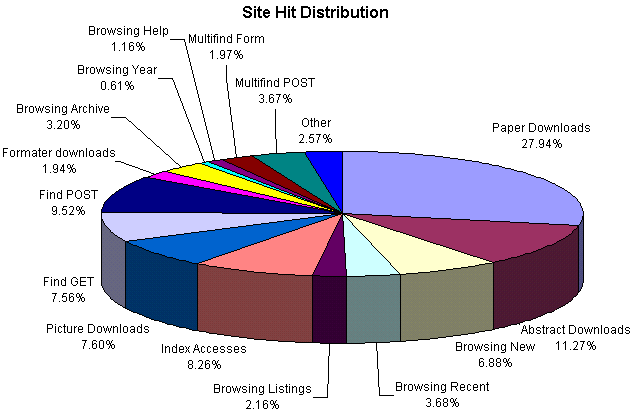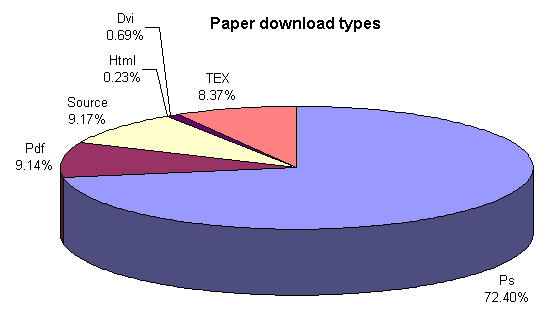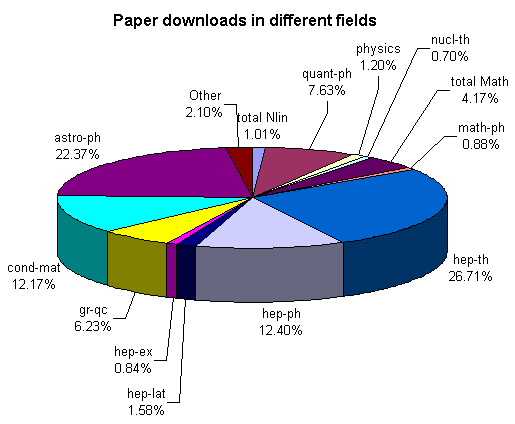[ Previous ] [ Home ] [ Next ]

Written by: Ian Hickman
What are the most popular pages on the mirror?
The data to answer this question was obtained by looking at the whole web log. Everytime a user accesses a page, the address of that page is logged. For example, if the user looks at an abstract of a paper, the word "abs" will be in the address.

There a couple of reasons why there are many more hits on complete papers than paper abstracts, these are:
- Users can subscribe to an auto alert service. This service will regularly tell users of any new papers that are deposited into the archive by sending them an email. This email not only contains a list titles of these new papers, but also a list of the abstracts of these new papers.
- Most users of this mirror are at universities around the country. Most of these universities have fast networks, where it would only take a few seconds to download the full paper which would contain the abstract.
What is the most popular download format?
If we look at the download format of all the downloads of any of the papers in the archive, the following graph is produced.

PostScript format is by far the most popular format.
Sometimes users want to have a paper in more than one format, so they download it more than once in different formats. These duplicate downloads will make some papers look like they have been downloaded many more times than they actually have and need to be removed from the logs. If a user downloaded paper X more than once (in the same format or not) in a 2 hour period any subsequent downloads were deleted.
What fields are downloaded the most?

The graph shows that the three fields Astrophysics (astro-ph), High Energy Physics - Phenomenology (hep-ph) and High Energy Physics - Theory (hep-th) make up over 60% of the paper downloads. Compare this to paper submission areas. The two graphs look fairly similar.

[ Previous ] [ Top ] [ Home ] [ Next ]